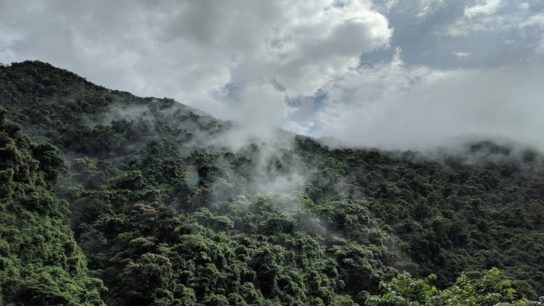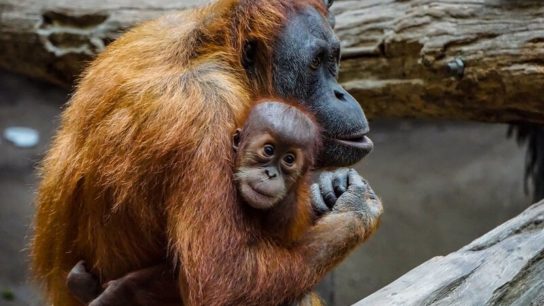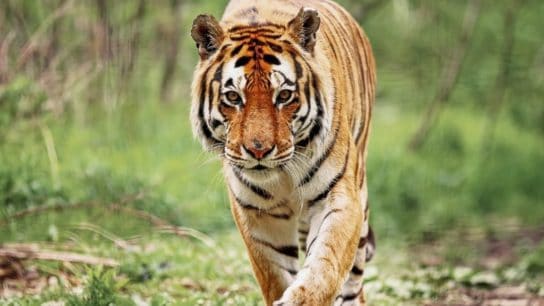With catastrophic wildfires increasing worldwide, will damaged ecosystems ever recover? Historical evidence demonstrates ecosystems can regenerate after fire, but with the increasing intensity and scale of these fires, humans will need to step up to aid the process.
—
Watching the devastating fires across southern California, many wonder if the complex, diverse ecosystems of the region can possibly recover from this devastation. The short answer is yes. However, the process is not simple, and it is further complicated by climate change.
Studies of historical fires have shown the processes ecosystems undergo after fires and the ways they can benefit biodiversity and ecosystem resilience. More recently, it has also become apparent that our rapidly changing climate is altering the stages of recovery, and humans can either help or hurt the process.
Ecological Succession
Fire is a natural part of ecosystem cycles, particularly forests, prairies, and grasslands, which is why they have evolved to depend on fire to create diversity. After a fire, there is an open patch of land that, to the human eye, resembles a scar on the land. To many species, though, it is an opportunity: no competition for resources and no predators. A lack of competition after fire opens a new niche in the ecosystem for increased diversity, leading to resilience – or an ecosystem’s ability to withstand change. This new beginning is known as ecological succession.
In 1988, over 30% of Yellowstone National Park burned as a result of fires that raged for weeks. Today, visitors to Yellowstone may not recognize that there was ever a fire, despite some areas of the park still being in the early stages of recovery. This stands as a testament to the fact that nature can recover from such catastrophes.
Land conditions after a fire – and what the recovery process will look like – depend on the intensity of the fire: how hot it burned and how far it spread.
In the early days of ecosystem recovery, burnt landscapes are colonized by hardy microorganisms and resilient plants, often referred to as “pioneer species.” To reach the soil, these organisms, seeds, and spores are typically carried on the wind. However, the larger the burned area, the farther these organisms must be carried: a major factor determining the time it takes an ecosystem to recover after a fire.
These initial colonizers use the nutrients in the soil and create richer topsoil that, after some time, allows more plants to flourish. After a catastrophe, the resilient shrubs, bushes, and seedlings that make up a forest understory are often the most recognizable sign of recovery. These typically fast-growing species require a lot of sunlight, and thrive in areas where there are no tall trees to shade them out. Once larger trees populate the area, they tend to occupy the edges of forests or fields.
Animals will not return until plants have returned, and it is typically small prey animals who return to an area first. Lots of habitat and few predators attract small mammals like mice, insects, and birds. Once the prey animals are thriving, predators follow.
Though all ecosystems are constantly changing, the sign that an ecosystem has reached a point of “health” is biodiversity. High numbers of species that occupy different habitats (or niches) in the ecosystem indicate that the ecosystem has recovered after a fire. The entire process, however, can take hundreds to thousands of years.
Climate Change and Wildfires
With global temperatures rising and drought conditions worsening, wildfires are becoming increasingly frequent and more destructive. The Canadian wildfires of 2023 burned through the country due to increasingly dry and hot conditions. Similar conditions were blamed for the LA fires and for an increase in fire activity across western US and Mediterranean countries. While ecosystems can recover after fire, these larger and more intense fires make recovery more difficult.

Several factors influence recovery, especially with larger and more intense fires that destroy greater areas of land. The larger the destruction, the farther pioneer species must travel. Microorganisms and seeds rely on wind, birds, or animals to carry them to new areas, but the greater the distance from undamaged land, the less likely they are to reach burned areas. A warmer and drier climate also makes it harder for new growth to survive, limiting the ability of any ecosystem to recover and regenerate. This is particularly true for vulnerable tree seedlings.
You might also like: Hotter, Drier, and More Flammable”: New Study Finds Climate Change Played a Role in LA Fires
Human Impacts
Evolution takes place over generations, but climate change is already here. In other words, humans have created a problem that requires human ingenuity and effort to solve.
To mitigate the effects of climate change on land, we must improve ecological management both before and after fires.
Though necessary, fires are both dangerous for people and economically devastating. Indigenous peoples in North America and Australia have set strategic fires as a practical method to clear space for dwellings, create grazing space for animals, and promote vegetative growth. As Europeans colonized these areas and decimated native populations and their cultural practices, traditional ecological management became sparse. On one hand they burnt vast swaths of land for settlement, while on the other they suppressed fires to protect logging interests in certain areas. This all-or-nothing approach allowed for a build-up of fire-prone vegetation.
It was not until the 1970s that federal agencies began adopting the policy of prescribed burns, sometimes called controlled burns, during which land management officials set fires in designated areas according to meticulous plans. This policy was meant to mimic the natural ecosystem cycles into which indigenous people had integrated so well.

Prescribed fires work according to the intermediate disturbance hypothesis, which postulates that ecosystems require a moderate amount of disturbance to create new niches for species to occupy, thus increasing diversity. Forest thinning through timber harvesting can prevent fires from reaching the canopy of a forest, and burning vegetation clears thick understory and soil cover.
After a fire, ecosystems take decades to revitalize the soil and restore species diversity. Humans can assist in this process by introducing relevant species to the area through community planting efforts and distribution of beneficial pioneer species. This not only aids diversity and speeds up the natural process but also stabilizes the soil, preventing erosion.
As climate change brings warmer, drier conditions globally, humanity must look to the lessons of the past to plan for the future. These lessons can be found both in indigenous knowledge and practices and the scientific study of historical fire zones. As the threat of climate change continues to loom over us, we must support affected ecosystems in recovery instead of dismissing their natural cycles.
Featured image: milos bicanski / Climate Visuals Countdown.
This story is funded by readers like you
Our non-profit newsroom provides climate coverage free of charge and advertising. Your one-off or monthly donations play a crucial role in supporting our operations, expanding our reach, and maintaining our editorial independence.
About EO | Mission Statement | Impact & Reach | Write for us














